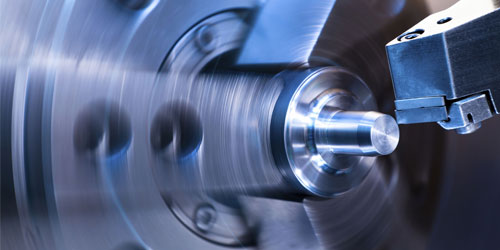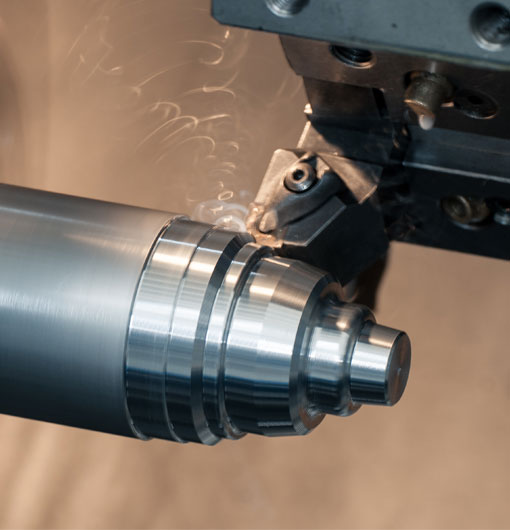Introduction
Computer Numerical Control (CNC) turning is a modern-day marvel in the world of manufacturing. This innovative method has completely revolutionized the way we craft intricate and complex parts for various industries, making precision and speed a top priority. This blog post aims to provide you with a comprehensive understanding of the CNC turning process and how it has changed the manufacturing landscape. Let's begin by understanding the basics!
What is CNC Turning?
CNC turning is a process in which a cutting tool, typically a non-rotary bit, is used to remove material from a cylindrical workpiece while it is being rotated at high speed. The workpiece is usually held in place within a collet, spindle, or chuck. As the piece rotates, the cutting tool moves along the material, removing layers of material to produce the desired shape.
This method is primarily used for creating cylindrical parts with precision, often replacing manual lathe operations. CNC turning can be performed on a variety of materials, including metals, plastics, and even wood. The benefits of using CNC turning machines include increased productivity, efficiency, and an accurate end product.
Components of a CNC Turning Machine
A typical CNC turning machine consists of several components that enable it to perform its functions with precision and accuracy. These components include:
1. Control System: The heart of the machine, the control system directs the operation and movement of other components based on a programmed code. This code is usually generated using Computer-Aided Design (CAD) software.
2. Spindle: The spindle holds the workpiece in place while it is being turned. It rotates at varying speeds, which determine the surface speed at which the cutting tool removes material.
3. Carousel: A part of the machine holding different cutting tools, the carousel allows the user to switch between tools quickly, streamlining operations.
4. Coolant System: During the turning process, heat is generated due to friction. The coolant system is responsible for maintaining an optimal temperature, preventing overheating of the workpiece or tools.
5. Chip Conveyor: This component efficiently collects and removes chips of material generated during the cutting process, ensuring a clean and safe work environment.
The CNC Turning Process
Before starting the CNC turning process, there are a few essential steps to follow:
1. Programming: This step involves designing the part using CAD software. The model is then converted into a CNC program using a post-processor, providing the machine with the necessary directions.
2. Material Selection: Appropriate material selection is crucial for successful CNC turning operations. Factors such as material properties, such as strength, weight, and melting point, are considered when selecting the right material for the project.
3. Tool Setup: The correct tools must be chosen and positioned within the carousel or turret. Doing so ensures that the appropriate tool is readily available when needed during the turning process.
4. Workpiece Positioning: Once the workpiece is loaded onto the spindle, adjustments are made to ensure it is held securely and properly aligned for turning.
5. Machine Setup: Now that the design, tools, and workpiece are ready, it's time to input the CNC program and let the machine do the work. The CNC turning process commences as the spindle and control system coordinate to produce a precise and accurate final product.
Applications of CNC Turning
The versatility and precision of CNC turning has made it an integral part of various industries. Here are some applications where CNC turning plays a vital role:
1. Automotive: Components such as engine parts, gearboxes, and various shafts are often manufactured using CNC turning.
2. Aerospace: Parts like turbine discs, landing gear components, and engine cowlings require CNC turning for highly precise and accurate production.
3. Medical: CNC turning is used to produce parts like prosthetics, surgical instruments, and medical implants, ensuring utmost reliability for patient safety.
4. Oil and Gas: CNC turning is essential for producing high-quality valves, fittings, and other components needed for oil and gas exploration and refining operations.
Advancements in CNC Turning Technology
As technology continues to evolve, CNC turning machines are continually being improved and upgraded. Some recent advancements include:
1. High-Precision Control: Newer CNC control systems offer higher accuracy to the micron level, ensuring precise and accurate parts are produced.
2. Increased Tool Storage: CNC turning machines are now being equipped with more tool storage capacity. This significantly improves efficiency as operators can store a variety of tools within the machine itself.
3. Dual Spindle Capability: Machines with dual-spindle setups allow for simultaneous machining of two parts, doubling the efficiency and effectiveness of the entire process.
4. Automation Integration: Incorporating automated loading and unloading systems helps streamline efficiency and minimize manual labor, further increasing productivity.
CNC turning technology has had an undeniable impact on the manufacturing industry. Through precision, efficiency, and the ability to create complex geometries, this manufacturing method continues to be invaluable in countless industries. It's fascinating to consider the possibilities for the future as technology and innovation continue to shape the world of CNC turning.
what is cnc turning













